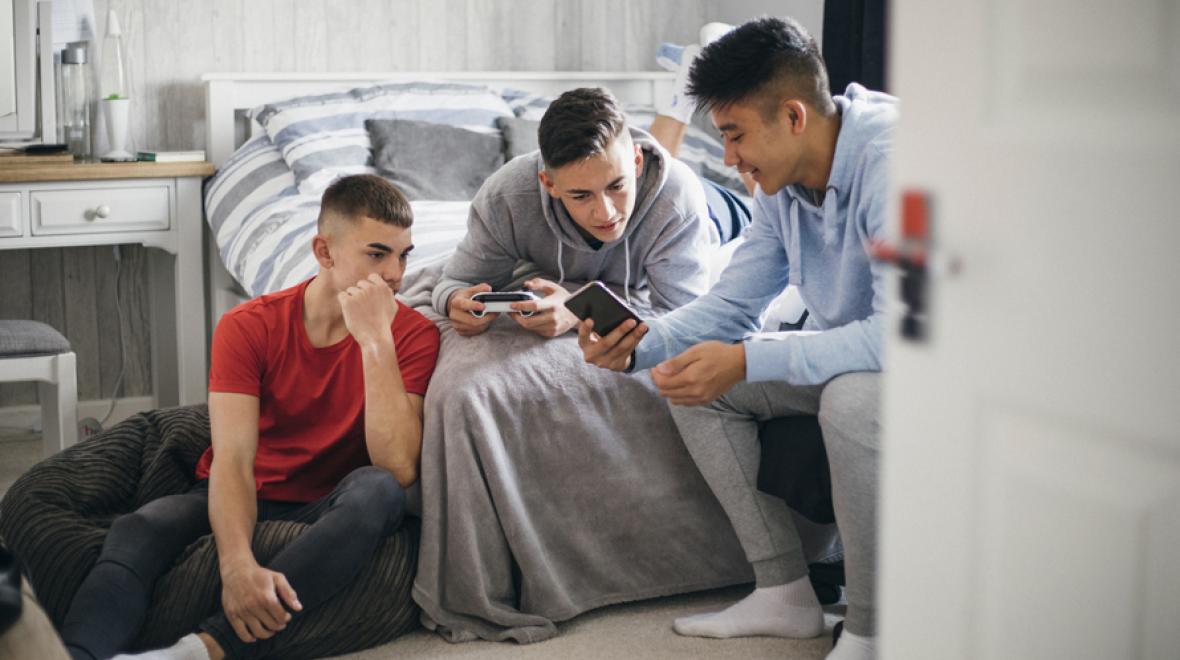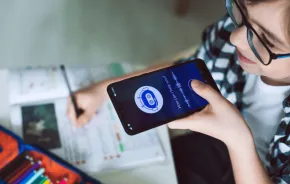
Is there anything more frustrating than hearing "fine" when you ask your kid how their day was? It's the same feeling — times 1,000 — when we see our kids on their devices and have no clue what they're up to. Though many of us worry, findings from the Common Sense Census: Media Use by Tweens and Teens, 2019 study reveal that, just like a kid's experience of their school day, the truth is much more nuanced and complicated than it appears to the naked eye. What are they really doing online for so many hours a day? Does every kid have a phone? What's my role as a parent? Our research provides insight into these questions so we can help our kids navigate the online world and be the best parents we can be.
The new census is the second wave of research tracking changes in tweens’ and teens’ use of and relationship with media between 2015 and 2019. Based on a nationally representative sample of more than 1,600 8- to 18-year-olds, the survey provides a snapshot of what media activities kids enjoy, how frequently they engage in those activities, and how much time they spend doing so. Some of the key findings include:
- Tweens and teens (still) use a lot of screen media. Eight- to 12-year-olds now average just under five hours of screen media a day (4:44), and teens view about seven and a half hours (7:22) daily — not including use of screens at school or the rapidly growing use of computers for homework (believe it or not, these numbers are not statistically higher than they were in 2015). (When kids report using more than one media type simultaneously, the time spent on each is calculated individually. For example, if a teen watches an hour of online videos while playing video games on their phone, that's tallied as one hour for videos and one hour for games.)
- There's this thing called YouTube... Since 2015, the percentage of young people who say they watch online videos "every day" has doubled, to 56 percent from 24 percent among 8- to 12-year-olds, and to 69 percent from 34 percent among 13- to 18-year-olds. For tweens, it is the media activity they enjoy the most, with 67 percent saying they enjoy it "a lot," up from 46 percent in 2015, when it ranked fifth in enjoyment. Time spent watching online videos also increased from 25 to 56 minutes a day among tweens, and from 35 to 59 minutes a day among teens on average.
- But everyone else has a phone! Tech use is aging down as young people get devices earlier. A majority (53 percent) of kids have their own smartphone by the time they are 11, and 69 percent have one at age 12. The number of 8-year-olds with phones grew to 19 percent in 2019 from 11 percent in 2015.
- Consumption crushes creation. The majority of young people devote very little time to creating their own content (just 2 percent of screen use among tweens and 3 percent among teens). Screen media use continues to be dominated by watching TV and videos, playing games and using social media; use of digital devices for making art, creating music, coding or writing remains minimal.
- A "homework gap" persists. Teens in lower-income homes spend less time using a computer for homework and more time doing homework on a phone than their peers from higher-income homes (34 minutes vs. 55 minutes on a computer and 21 minutes vs. 12 minutes on a phone per day, on average). That is likely at least partially due to lower computer ownership among teens in lower-income homes.
So, where do you fit into all of this? Though kids' activities have changed a lot and the ground keeps shifting under our feet, what kids need from their parents remains the same. Being involved and engaged is the key to helping kids learn to use smart judgment, make informed choices and develop a sense of responsibility in the online (and offline) world. Try these ideas for guiding your kids toward healthy experiences in whatever they do:
1. Ignore cellphone pressure
Though a majority of kids have a phone by 11, base your decision of when (or whether) to get one for your kid on your family's actual needs and your kid's maturity level.
2. Enjoy videos and apps with your kid
Co-viewing and co-playing are bonding experiences, whether they happen on the big screen or on a mobile device. Download games you can play against one another, subscribe to YouTube channels to watch together, and listen to audio books and podcasts together. If you can't watch or listen together, ask about what they’re using; most kids love to talk about media.
3. Encourage (actually, enforce) balance
The census proves that media use only increases as kids get older, so make sure you're actively protecting your kid's homework time, downtime and family time from tech intrusion. You can set up screen-free times and zones (such as during homework, at the dining room table, or in the bedroom).
4. Model healthy phone use
With some kids getting phones as early as 8, it's important that you demonstrate the habits you want your kids to pick up. When you have to use the phone when you're with your kids, tell them why. Make a show of turning off your phone for family time. Tell kids how you set limits for yourself.
5. Get to know YouTube
The census confirms what many of us already know: Kids really love YouTube. The platform has made changes to slightly improve the appropriateness of related videos displayed to kids. But you can use a few tools, such as playlists, subscriptions and even an ad-free membership, to cut down on exposure to iffy stuff. Try to make time to watch with your kids when you can. Check out Common Sense Media's YouTube channel reviews to find the good stuff for kids.
6. Encourage creativity
Though the creative platforms that are popular with kids, such as TikTok, Snapchat and Instagram, each have pros and cons, they do offer incredibly sophisticated image-editing tools that allow kids to really let their imaginations go. Consider experimenting with them together. You can also nudge kids toward other creative tools, such as writing, coding, 3-D modeling and building games to get them into creative hobbies.
Originally published by Common Sense Media and republished with permission.











